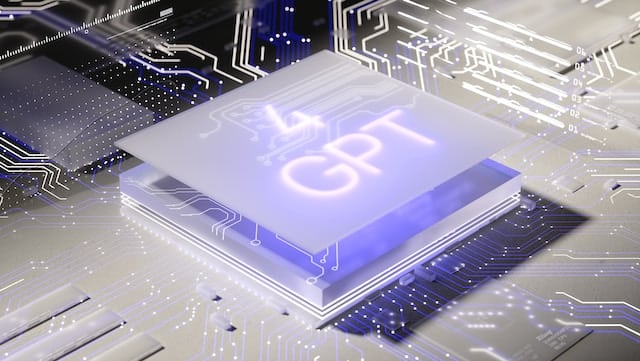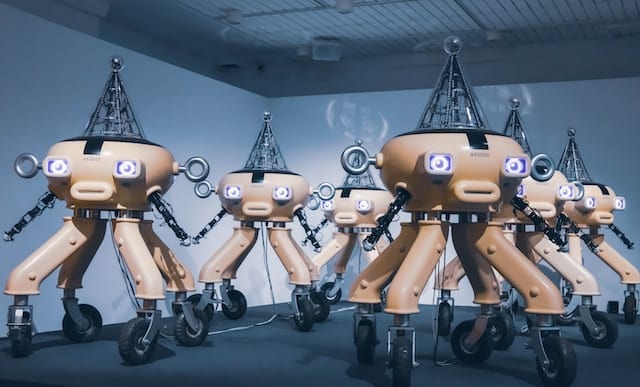Exploring Different Types of AI
In the ever-evolving world of technology, Artificial Intelligence (AI) shines as a beacon of innovation. Imagine computers that think and learn like humans. That’s the heart of AI—machines that mimic human intelligence. Think about Siri or Alexa; they’re AI assistants that chat with us like friends. But AI is much more—it’s a whole toolbox of smart techniques that help computers do remarkable things. Here are some different types of AI you might be hearing about along with a brief explanation.
- Artificial Intelligence (AI): Picture AI as the captain of this grand ship called technology. It’s all about creating machines that can think like us. AI’s like the conductor of an orchestra, leading various techniques to create a symphony of smart devices. Think of self-driving cars—they use AI to understand traffic and navigate on their own. AI isn’t just one thing; it’s a bundle of skills that make computers way more useful.
- Machine Learning (ML): Meet the tech magician known as Machine Learning. It’s like teaching a computer new tricks without actually programming those tricks. Imagine you’ve got a pet robot that learns to play fetch by watching you throw a ball. That’s ML for you. It’s like a smart student who gets better with practice. Self-driving cars? They use ML to get better at driving over time. ML’s all about learning from data and making computers smarter as they go.
- Deep Learning: Dive into the world of Deep Learning, a super skill within Machine Learning. Think of it as a puzzle solver that can crack even the trickiest riddles. Deep Learning uses layers of computer brain cells called neurons to figure out stuff on its own. Imagine teaching a robot to recognize different faces—it’s like magic. Deep Learning makes computers go “aha!” as they uncover hidden patterns in data. It’s like a detective piecing together clues to solve a mystery.
- Natural Language Processing (NLP): Imagine computers talking like humans, understanding jokes, and feeling our emotions. That’s where Natural Language Processing (NLP) comes in. It’s the magic wand that lets computers understand and talk back to us in our own words. Think of it as a translator that makes computers fluent in human language. NLP helps your virtual assistant understand what you mean, even if you don’t say it perfectly.
- Sentiment Analysis: Think of Sentiment Analysis as a computer’s emotional radar. Just like a friend can tell if you’re happy or sad from your voice, Sentiment Analysis helps computers understand feelings in words. Businesses use it to know what customers really think about their products. It’s like a helper that figures out if people are cheering or grumbling in online comments.
- Named Entity Recognition (NER): Meet the detective of the language world—Named Entity Recognition (NER). It spots names, dates, places, and more in sentences, just like you spot superheroes in a comic book. NER makes sense of all those words by giving them roles and importance. Imagine teaching a computer to identify movie titles, city names, or famous people—it’s like giving it a special pair of glasses for reading.
- Transformer Architecture: Imagine a smart tool that helps computers understand what you mean, even when you use tricky words. That’s where Transformer Architecture comes in. It’s like a translator and a mind reader combined. It helps computers grasp the context of your words, like a detective solving the puzzle of a tricky story. Transformer Architecture is the secret sauce that makes chatbots and translation apps work so well.
- BERT (Bidirectional Encoder Representations from Transformers): BERT is like the language genius in the AI world. It’s the wizard that understands not only what words mean, but also how they fit together. Imagine someone who knows not only the words in a book but also the story’s twists and turns. BERT’s like that—it understands the bigger picture by looking at words before and after to get the whole story.
- Language Model: Imagine a brainy dictionary that computers use to understand what we’re saying. That’s the Language Model. It’s like a cheat sheet that helps computers talk to us in a way we get. Think of it as a language expert that helps machines and humans chat smoothly. It’s the reason your phone understands what you mean when you ask it something.
From AI’s big ideas to Language Models’ helpful hints, these types of AI work together to make technology smarter and more useful. It’s like a team effort, with each part doing its special job. As technology keeps moving forward, knowing about these types of AI helps us understand the cool things computers can do. So, next time you ask Siri a question or use Google Translate, you’ll know there’s a bunch of smart AI techniques behind the scenes making it all happen.







